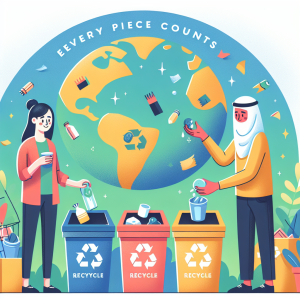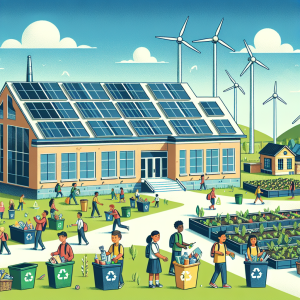Designing the Perfect Off-Grid Tiny House
Layout and Space Optimization
Designing a perfect off-grid tiny house begins with thoughtful space optimization and layout planning. A well-designed tiny house maximizes every square inch, ensuring that comfort and functionality are not sacrificed. Open floor plans with multi-functional spaces can transform limited square footage into versatile living areas. Consider lofted areas for sleeping quarters, which free up ground-level space for daily activities. Built-in furniture, such as fold-down tables and Murphy beds, can further enhance flexibility. Incorporating modular and convertible furnishings allows the dwelling to adapt seamlessly to different needs, while clever storage solutions, such as under-floor compartments and wall-integrated shelves, ensure clutter is kept at bay.
Energy Systems and Appliances
To live comfortably off-grid, efficient energy systems are paramount. Solar panels are arguably the cornerstone of sustainable energy in tiny homes, converting sunlight into electricity. Opt for high-efficiency photovoltaic panels, paired with a robust battery storage system like lithium-ion or lead-acid batteries for reliable energy reserve. Additionally, incorporating a small wind turbine can complement the energy output in wind-prone areas. Choosing energy-efficient appliances, such as LED lighting, inverter-driven refrigerators, and induction cooktops, minimizes power consumption. Moreover, integrating a smart home system can provide real-time energy usage insights, promoting monitoring and management efficiency.
Water Collection and Waste Management
Water autonomy is critical in off-grid living. Designing an effective rainwater harvesting system allows tiny homes to capture and store rainwater, which can be filtered for potable use. Install gutters leading to a collection tank, and consider advanced filtration systems such as reverse osmosis and UV filters to ensure water purity. Wastewater can be managed with a graywater recycling system, which separates reusable water from sinks and showers for gardening or toilet flushing. Furthermore, a composting toilet is an eco-friendly solution for human waste, breaking down waste without water and enriching soil, reducing the pressure on septic systems.
Thermal Insulation and Climate Control
Effective thermal management ensures that the tiny house remains comfortable, irrespective of external weather conditions. High-quality insulation materials, such as spray foam, recycled denim, or rigid foam, will retain internal temperatures, reducing reliance on HVAC systems. Low-emissivity (Low-E) windows help control heat gain and loss, supporting passive solar heating in winter and cooling in summer. For heating, consider compact wood-burning stoves or propane heaters, offering warmth without excessive energy use. In warmer climates, cross-ventilation, ceiling fans, and strategically placed windows promote airflow, mitigating the need for energy-intensive cooling solutions.
Sustainability and Materials
Sustainability is a fundamental principle in designing an off-grid tiny house. Select environmentally friendly materials, such as reclaimed wood, recycled steel, and bamboo, to minimize environmental impact. These materials often offer durability and aesthetic appeal, aligning with sustainable ethos. Moreover, priorities sustainably sourced materials accredited by organizations like FSC (Forest Stewardship Council) for wood. Implement non-toxic paint and varnishes to improve indoor air quality. Designing the home with modular or prefabricated components can also reduce construction waste and time, embodying the principles of sustainable building practices.
Off-Grid Independence and Lifestyle Integration
The essence of off-grid living is the pursuit of self-reliance. Align the design with lifestyle goals by integrating appropriate off-grid systems that resonate with personal values. The placement of windows and the orientation of the house are crucial for utilizing natural light and passive solar power. Solar water heaters can provide a sustainable solution for off-grid hot water needs. By tending a small vegetable garden irrigated with recycled graywater, occupants secure a measure of food self-sufficiency. Depending on location, chicken coops or beekeeping can also augment food independence, aligning with permaculture principles for a holistic lifestyle.
Connectivity and Technology
While off-grid living often implies detachment, connectivity remains important for safety and work. Integrate modern technology like satellite internet for reliable online access, enabling remote work and communication. Some tiny homes incorporate cellular signal boosters to strengthen weak signals in remote areas, ensuring mobile connectivity. Integrating energy-efficient tech solutions, like energy-monitoring apps and automated lighting controls, can enhance control over the home environment. Additionally, installing security cameras powered by solar energy can secure the premises, providing peace of mind without draining resources.
Transportability and Legal Considerations
If mobility is a priority, designing a tiny house on wheels (THOW) offers the flexibility to relocate. However, this demands knowledge of road weight limits, width constraints, and proper trailer support. Ensure designs comply with local codes and regulations, which can vary significantly by region. For stationary tiny homes, obtaining permits and adhering to zoning laws is essential for a smooth building process. Being aware of these legal dimensions not only safeguards the investment but also ensures that the lifestyle choice remains unhindered by bureaucratic challenges.




